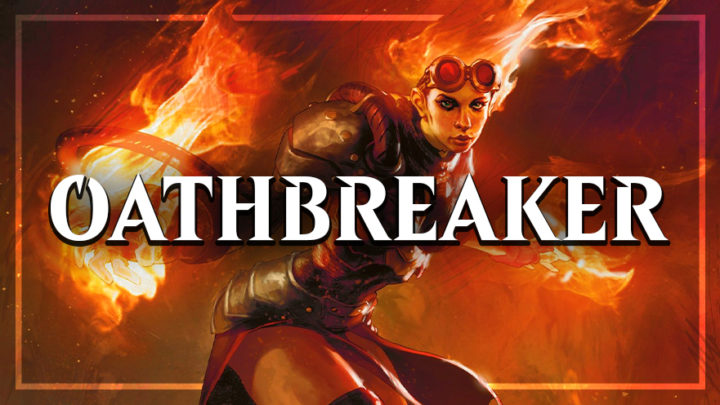Over the New Year’s weekend, I was invited to take part in Oathfest, a charity drive event set up by the great people over at Magikids. Magikids is a charity that strives to make Magic accessible for youngsters by putting Magic cards into the hands of teachers and youth clubs. It’s a great initiative — Magic is great for teaching, and also a lot of fun.
Oathfest was a weekend of people playing Oathbreaker. For the uninitiated, Oathbreaker is an eternal format with much the same card pool as EDH — with a slightly different banlist — and some key differences. Firstly, your Commander is a Planeswalker; secondly, you have a “Signature Spell” in the Command Zone, too. This spell is an instant or sorcery, and is similarly taxable like your Commander. Finally, your deck, Commander, and Signature Spell total 60 cards.
It’s a fun, fast and interactive format, and provides something a little different for multiplayer Magic. There was only one problem, though: I didn’t have a deck.
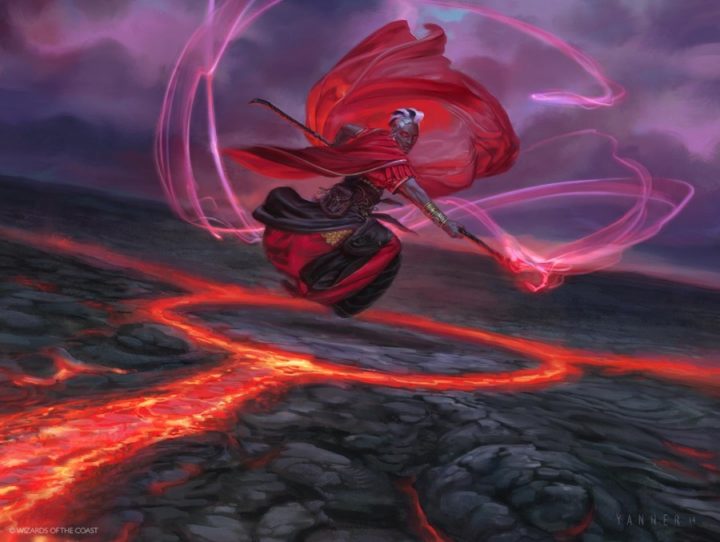
Oathbreaker: Chandra, the Firebrand

Enter Chandra.
As someone who has played a little Oathbreaker before (you can check out my Nahiri, Storm of Stone deck here), I knew I wanted to keep it relatively simple, and not very blue. What can I say, I just love playing red!
I also knew that I wanted to play a fun deck with fun gameplay, and one that could win without going to combat if it had to. I’ve been brewing a lot recently around Brash Taunter and damage effects, and I recently toyed around with Chandra, the Firebrand for the copy effect.
Ultimately, I ended up cutting her from my Neyith of the Dire Hunt build, but I was still kinda hung up on the card; the feeling only intensified after watching the excellent Caleb Gannon draft multiple decks along these lines in the “Live the Dream” Cube draft.
So, Chandra was the place to start. How could I make her work?
Signature Spell: Jeska’s Will

I deliberated for a while over my Signature Spell. Part of me thought having access to a finisher like Comet Storm or Blasphemous Act would be a good place to start. After some more exploration, I zoned in on having an enabler be better, particularly as I could copy it. Jeska’s Will seemed the obvious choice, as not only does it provide a great deal of mana, but it can also let me dig deeper.
The key to Signature Spells, in my mind, is for them to be cheap enough to cast reliably, and for them to be recastable at least once. Jeska’s Will fulfills this by being able to pay for itself — and, when coupled with Twincast effects, it allows you to get a good number of instances of the spell resolved in the same turn.
In choosing Jeska’s Will for my Signature Spell, I ended up moving away from Brash Taunter. That deck looks much different, with a card like Blasphemous Act in the Command Zone and cards like Imperial Recruiter and Goblin Matron to enable the combo. Instead, I opted for straight up burn. It is Chandra, after all!
The Deck

The deck comes in at a reasonable price once you drop Wheel of Fortune, which I’m lucky enough to own a copy of. The goal is simple: make enough mana to burn out our opponents, Chandra style.
On average, Jeska’s Will generates five mana and three cards each time we cast it, with the potential to go higher on mana. Chandra typically will not survive a turn cycle. As such, we aim to put ourselves in a position to go off in one turn, if possible.
Set Up

The early stages of the game for us consist mostly of controlling the board. Slamming Ruby Medallion or Runaway Steam-Kin early is a recipe for success, but if we’re not that lucky, dropping Magus of the Moon on turn 2 with the help of a ritual or Simian Spirit Guide is also a solid start.

We also have another more threatening start that involves Electrostatic Field and/or Scab-Clan Berserker. Landing these creatures early can really start to whittle down life totals, particularly if we can play a Flame Rift.

I also can’t emphasize enough how good Pithing Needle is in Oathbreaker, and if it’s playable, then you’d be remiss not to jam it in as some cheap interaction. Embereth Shieldbreaker, meanwhile, acts as a great blocker with some added removal.
The Mid Game
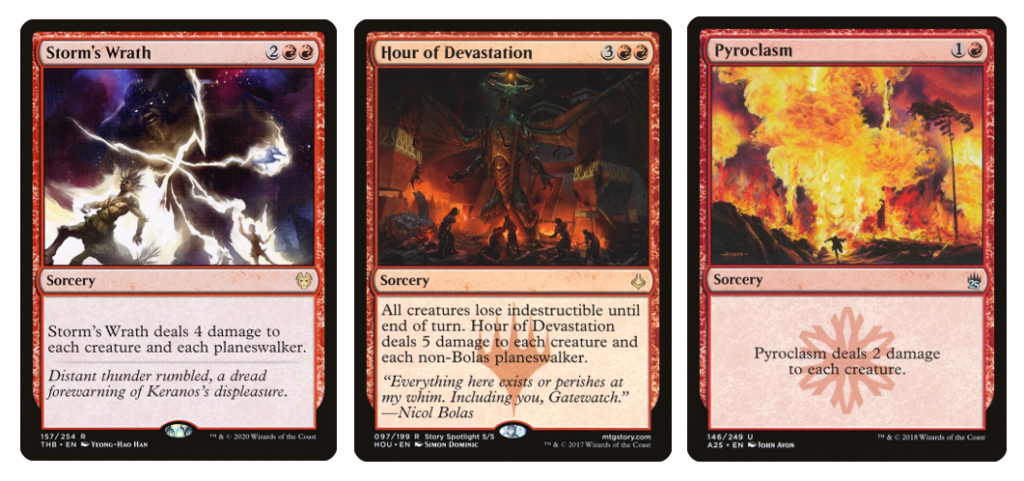
If we do end up with a slightly slower hand, we can play things out in a more reserved fashion. Resolving Storm’s Wrath or Hour of Devastation on turn 5 or 6 can often set back our opponents far enough that we can follow up with our combo. And if there are a bunch of mana dorks and other annoying creatures? Well, Pyroclasm is pretty good.
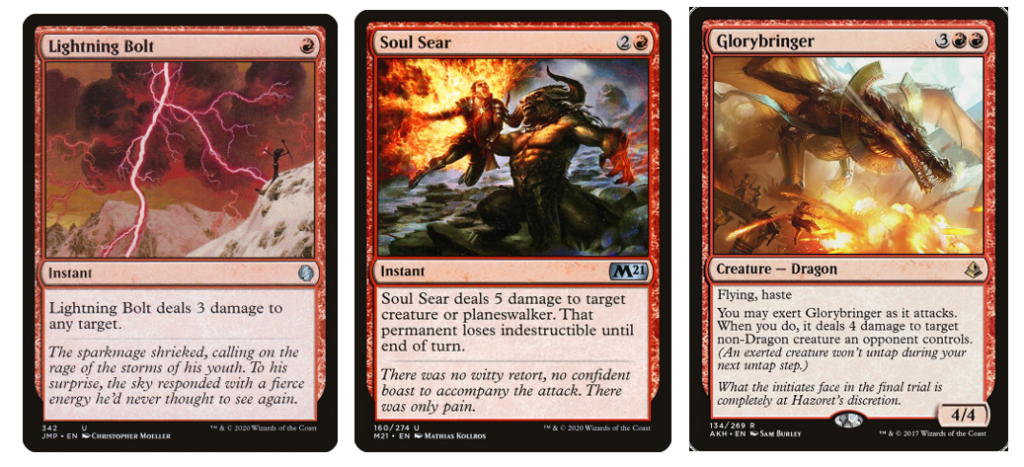
There’s a bunch of great interaction in the deck, but what mattered most was being able to interact with Planeswalkers. Beyond our wraths, we run Lightning Bolt, Searing Spear, and Soul Sear — all flexible and cheap answers to many problems. There’s also the excellent Glorybringer, which is honestly a bit of a pet card of mine — it’s still brilliant in Oathbreaker, though.
Card Draw
Of course, having access to great cards doesn’t mean anything if we can’t draw them. Aside from Jeska’s Will in our Command Zone, we also run Faithless Looting, Thrill of Possibility and Chandra’s Regulator, which are all great early game plays.
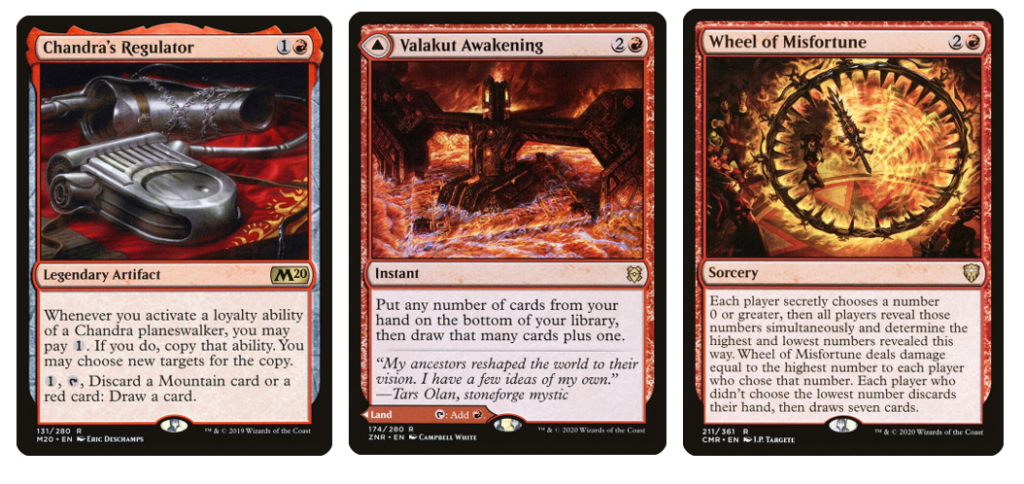
Chandra’s Regulator offers extra utility by being able to copy our loyalty abilities, and when we need to refill our hand, we have Valakut Awakening — an MDFC land that’s good at any point of the game — and both three-mana wheels: Wheel of Fortune and Wheel of Misfortune.
These are brilliant includes in the deck, beyond just for refilling our hand when storming off. They’re going to refill our opponent’s hands in order to maximize Jeska’s Will mana, and in the case of Wheel of Misfortune, potentially add extra burn damage, too.
The Combo
Once we have access to seven mana, we can try to go off. Depending on how much blue there is at the table, there’s an argument for waiting until you draw into some counterspells, but sometimes it’s correct to just go for it.
We needn’t always wait until turn 7, either; with the plentiful rituals in the deck — spells that give you a net positive on mana — you can go off as early as turn 5. Including the “layaway” rituals — ones that may need an investment over consecutive turns — we have access to:
- Runaway Steam-Kin
- Koth of the Hammer
- Simian Spirit Guide
- Neheb, the Eternal
- Desperate Ritual
- Pyretic Ritual
- Seething Song
None of these in isolation will help us in casting our finisher burn spell, but as enablers for us to chain together multiple instances of Jeska’s Will, they can do a lot of work.
Now, there’s another way to maximize our potential to gain mana, and that’s by using copy effects for our spells. Aside from having Chandra in our Command Zone — who needs to be on 3 loyalty or higher in order to even use her -2 to copy Jeska’s Will, seeing as she needs to stay in play — we run a number of others.
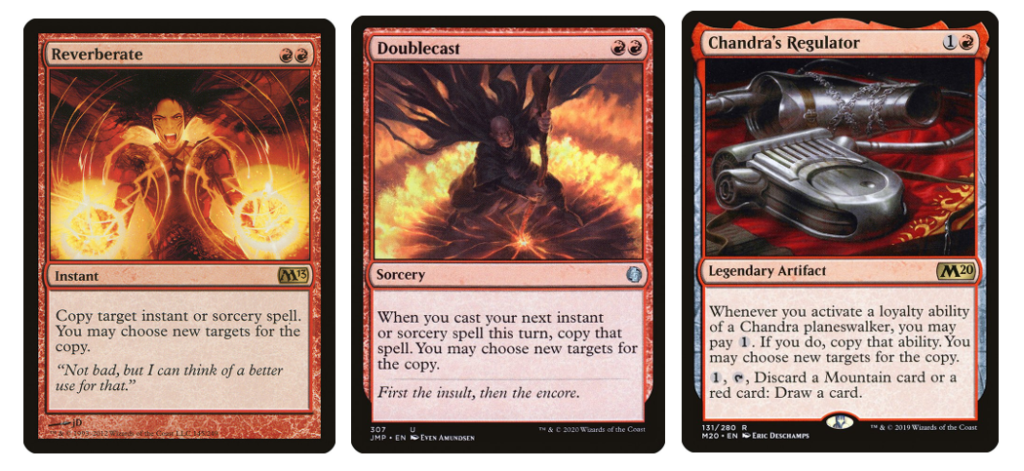
Sometimes copying a ritual is the correct thing to do, but depending on the mana we have access to, and the life totals of our opponents, we may be able to do more damage by copying a slightly smaller X spell.

If all goes to plan, we should be able to chain multiple castings of Jeska’s Will, paying three, five, seven and maybe even nine mana before we stop making a net gain on mana. At that point, we should have exiled enough cards to either see a win condition, or a draw spell that can let us access one.
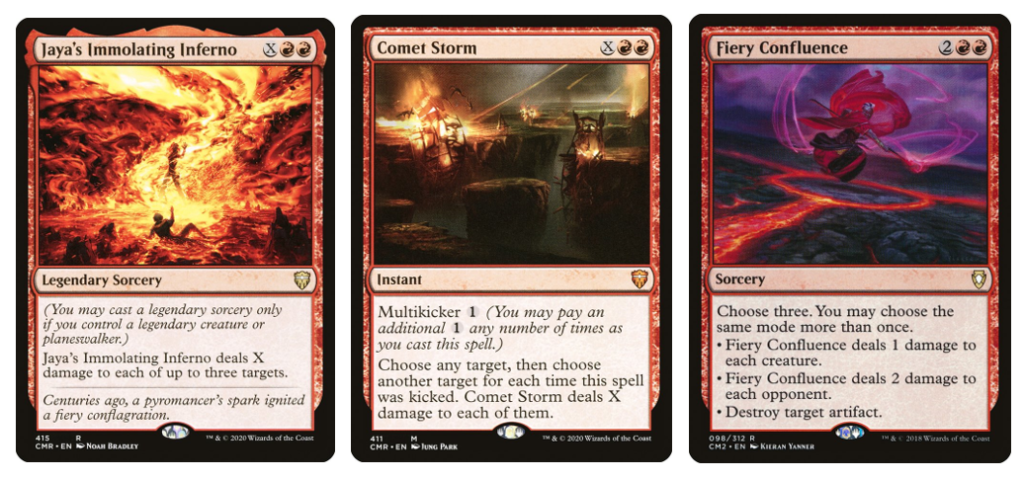
When we are ready to pop off, Jaya’s Immolating Inferno and Comet Storm are our spells of choice, though Fiery Confluence might just be one of the best and most flexible cards in the deck. At base value, it can be six damage to each opponent, but when copied, that damage can really start to add up. With the ability to hit creatures and artifacts, too, it’s a perfect Oathbreaker card.

The real best card in the deck is undoubtedly Bonus Round, though. Bonus Round ensures every spell we cast thereafter is copied. If we copy Bonus Round, that gives us three copies of each spell. It’s an embarrassment of riches, and if you can’t win after casting this? Well, you done messed up, kiddo.
Alternate Win Cons

Despite having access to some ways to protect our combo and our pieces, there is the chance that things don’t go quite to plan. We’re in a powerful deck, after all, and our opponents should be trying their best to outwit us.

For those occasions, we’re running Underworld Breach to give us another chance at popping off. With access to two wheel effects, we should be able to fill our yard enough to cast the key spells we need in order to crawl across the finish line.
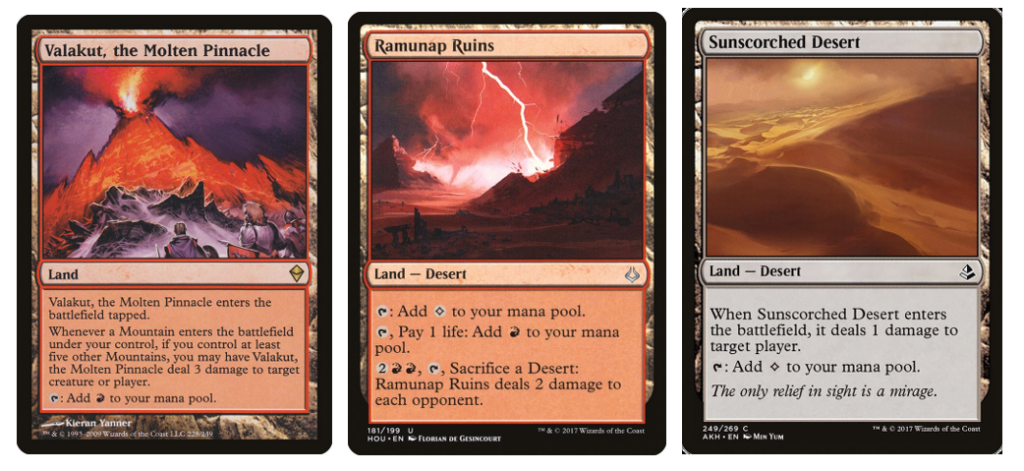
On other occasions, we may be playing against lifegain decks or otherwise not have access to our finishers, either through using them as removal, or by having them milled or countered. Thankfully, our mana base has us covered. We run three deserts that can be fed into Ramunap Ruins to help close things out, and we have enough Mountains to enable Valakut to throw around some Lightning Bolts.

Don’t forget, too, that a lone Lightning Bolt can be enough to finish a player with the right sequence of spells. By using Chandra’s loyalty ability and then casting Bonus Round, we gain two Bonus Round effects.
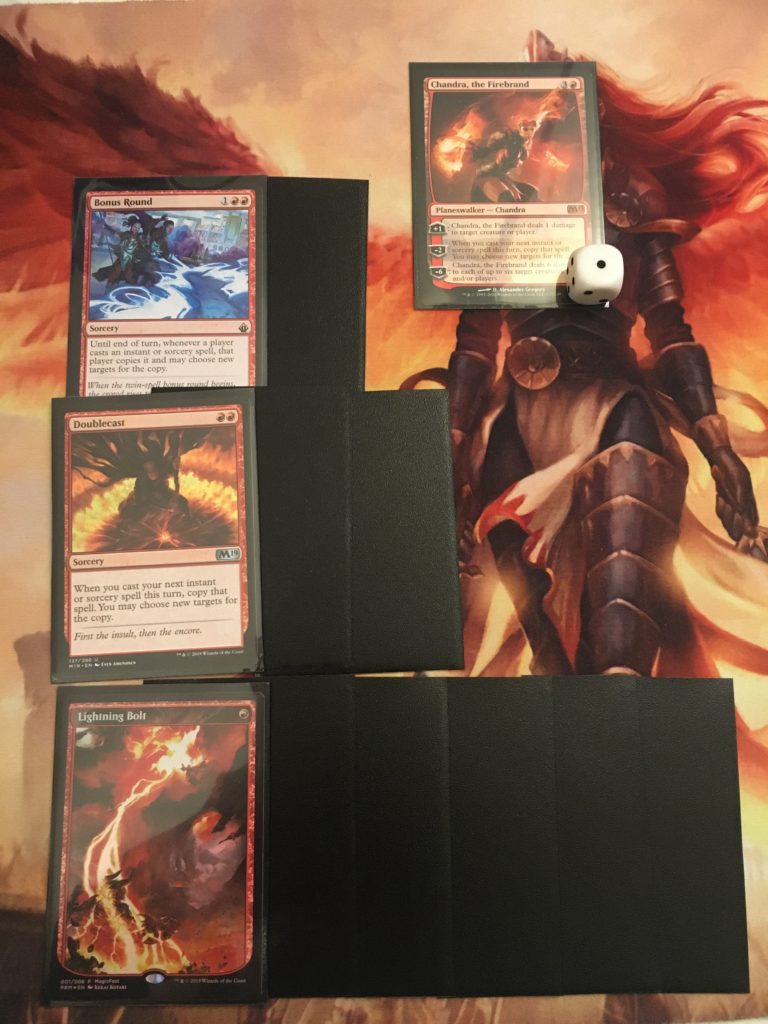
This means that when we cast Lightning Bolt, we’ll get our original copy, plus two extra copies from our Bonus Rounds. That’s already nine damage, and if you can throw another effect in there like Doublecast — which will also be copied twice — you’re looking at six copies of Lightning Bolt on the stack. I hope you brought some flextape, because that’s a lot of damage.
Oathbreakin’
As a relative newcomer to the format, I have to say I had a real blast brewing and building this deck. I avoided using any online resources during the build, and was pleasantly surprised at how the deck came together.
I was also pretty surprised to see that Jeska’s Will is still a relative newcomer on the scene, and I’m sure it’s going to continue to heat up the battlefield in the New Year.
If you’d like to try building a cheaper version of the deck, I suggest cutting Valakut, Deflecting Swat and Wheel of Fortune. This’ll drop the price from around $400 right down to $100. If I were to make some edits after playtesting, I’d probably try swapping Neheb for a Helm of Awakening. It’s a nice price cut, and perhaps more powerful in isolation.
If you’re looking for a format that can take around a half hour to play, Oathbreaker might just be for you. It’s a chance to play some more niche strategies that otherwise end up diluted in 100-card, 40-life formats.
The Oathbreaker charity event this weekend was a huge success, and it feels great to have been a part of it. After smashing the goal of $1,000, the total raised so far has been $2,447.81! Though the goal has been met, you can still donate to the campaign here.
Let me know your experiences of Oathbreaker on Twitter. I think I’m in love with this deck!

Kristen is Card Kingdom’s Head Writer, and member of the Commander Advisory Group. Formerly a competitive Pokémon TCG grinder, she has been playing Magic since Shadows Over Innistrad, which in her opinion, was a great set to start with. When she’s not taking names with Equipment and Aggro strategies in Commander, she loves to play any form of Limited.

